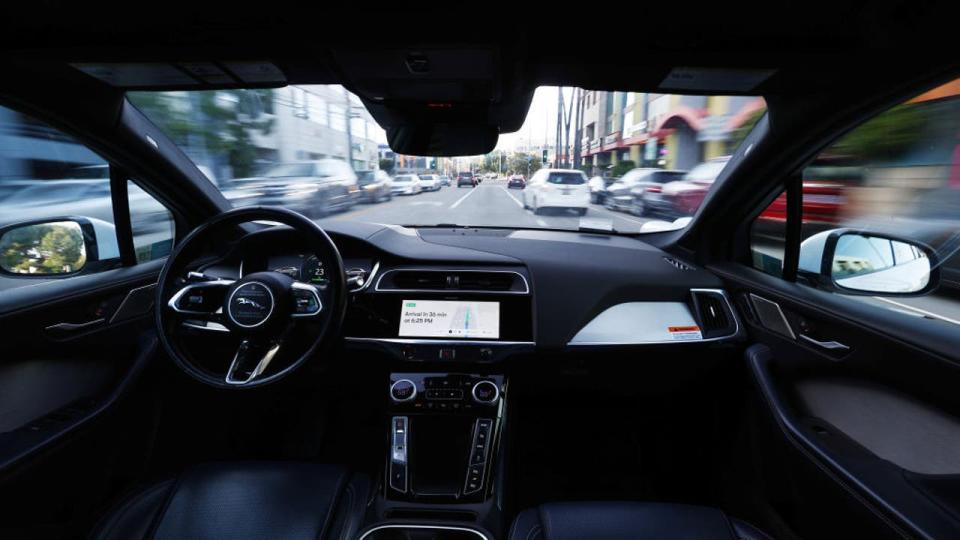Self-driving cars could lead to a fourth, white traffic signal — or no signals at all
The advent of self-driving cars could bring significant changes to traffic laws, including a potential fourth traffic signal, researchers say.
Alongside the familiar red, yellow, and green lights, a white light could signal that autonomous vehicles are in control of the intersection. Alternatively, signals might become unnecessary altogether.
New traffic light concept
Ali Hajbabaie, an associate engineering professor at North Carolina State University, is among those envisioning the future of traffic lights.
"When we get to the intersection, we stop if it's red, and we go if it's green," Hajbabaie told The Associated Press. "But if the white light is active, you just follow the vehicle in front of you."
An alternative proposal involves flashing red and green lights, eliminating the need for a white light. These changes would likely occur once about half of all vehicles on the road are self-driving.

Pilot programs and research grants
University of Michigan civil engineering professor Henry Liu believes the transition could happen sooner than expected.
"The pace of artificial intelligence progress is very fast, and I think it’s coming," he said.
The University of Michigan has received a grant from the U.S. Department of Transportation through the bipartisan infrastructure law to test traffic light changes using real-time speed and location data from cars. This pilot program is being conducted in the Detroit suburb of Birmingham.
Autonomous vehicles and traffic flow
"The beauty of this is you don’t have to do anything to the infrastructure," Liu said, noting that Birmingham's traffic lights operate on a fixed timer and don't adjust for varying traffic flows. More than half of traffic lights nationwide do not account for congestion or lighter-than-normal traffic conditions.
Liu pointed out that while there are high-tech solutions for monitoring traffic, they often require complex and expensive upgrades for cities.
History and evolution of traffic lights
The first "municipal traffic control system" appeared in Cleveland in 1914, according to Smithsonian Magazine. Initially, there were only green and red lights, with the yellow light added a few years later. Since then, traffic lights have seen little change.
Current advancements in autonomous vehicles
While fully autonomous vehicles are not yet available on the market, companies like Tesla, Mercedes, GM, Ford, and Waymo (a Google subsidiary) are making significant strides. These companies are bridging the gap with advanced driver-assistance systems and autonomous ride-sharing services.
"While it is good at this early stage of AV development that people are thinking creatively about how to facilitate the safe deployment of AVs, policymakers and infrastructure owners should be careful about jumping too soon on AV-specific investments that may turn out to be premature or even unnecessary," Waymo spokesperson Sandy Karp told FOX Business.
Computational simulations and traffic efficiency
At North Carolina State University, researchers are proposing a "white light" phase to improve traffic flow at intersections. This concept leverages the computing power of autonomous vehicles to coordinate traffic, reducing travel time and fuel consumption.
"This concept we’re proposing for traffic intersections, which we call a ‘white phase,’ taps into the computing power of autonomous vehicles themselves," said Hajbabaie. "Red lights will still mean stop. Green lights will still mean go. And white lights will tell human drivers to simply follow the car in front of them."
Distributed computing for traffic control
The white phase concept relies on distributed computing, using the resources of all autonomous vehicles to dictate traffic flow. This approach is more efficient and less susceptible to communication failures than centralized computing.
Researchers tested the distributed computing white phase concept using microscopic traffic simulators. These models replicate real-world traffic, demonstrating that autonomous vehicles improve traffic flow, especially when the white phase is implemented. Higher percentages of autonomous vehicles at intersections result in greater improvements.
Potential for future implementation
While autonomous vehicles and the distributed computing approach are not yet ready for immediate adoption, researchers believe elements of the white phase concept could be implemented with minor modifications. Ports, with their high volumes of commercial traffic and higher rates of autonomous vehicle adoption, could serve as ideal locations for pilot projects.
By incorporating these innovative concepts, the future of traffic control could see significant advancements, making intersections more efficient and reducing fuel consumption.
The Associated Press and FOX Business contributed to this story. It was reported from Los Angeles.

